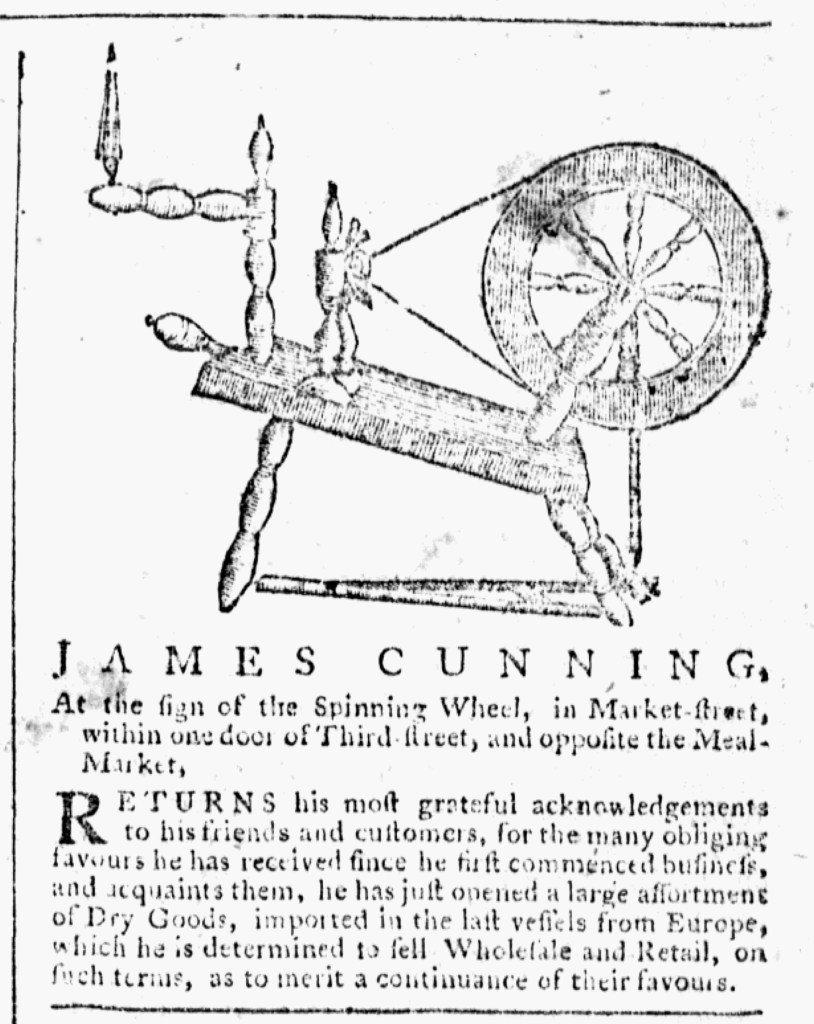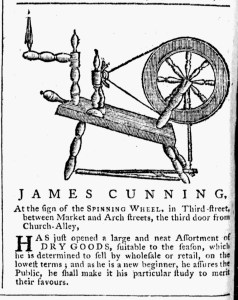What was advertised in a colonial American newspaper 250 years ago today?

“At the sign of the Spinning Wheel.”
In December 1772, James Cunning took the pages of the Pennsylvania Packet to advertise the “large assortment of Dry Goods” available at his shop on Market Street in Philadelphia. He took the opportunity to express his “grateful acknowledgments to his friends and customers,” thanking them for “the many obliging favours he has received since he first commenced business.” In order to “merit a continuance of their favours,” Cunning declared that he would set favorable “terms” for both wholesale and retail sales. Those “terms” certainly included price and likely credit as well. They may have also included packaging, delivery, and other services.
Cunning advised readers that they would find his shop “At the sign of the Spinning Wheel.” To strengthen the association between that symbol of industriousness and his business, Cunning adorned his advertisement with a woodcut that depicted a spinning wheel. Larger than the stock images of vessels at sea and horses in the upper left corners of half a dozen advertisements in the December 7 issue and its supplement, the spinning wheel accounted for more than half the space occupied by Cunning’s advertisement. That represented significant expense for Cunning, first for commissioning a woodcut tied to his business and for his exclusive use, then for the space required to publish it. Printers charged by the amount of space, not the number of words.
Cunning apparently considered including the image in his notices worth the expense, especially since he continued to use it when placing new advertisements. The image first appeared in advertisements Cunning inserted in the Pennsylvania Journal in October 1771. By the end of the month, he transferred the woodcut to the printing offices of the newly-launched Pennsylvania Packet. It appeared in an advertisement in the inaugural issue. More than a year later, Cunning included the image in a new advertisement in the Pennsylvania Packet, convinced that it would result in a satisfactory return on his investment in commissioning it. He could have retired the image after it appeared in that initial run of advertising if he did not believe that it resulted in greater attention for his business. That he used it again suggests that he determined that image and text together helped to draw “friends and customers” to his shop.

